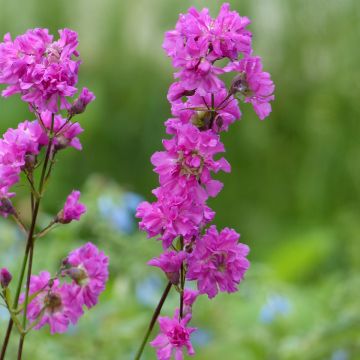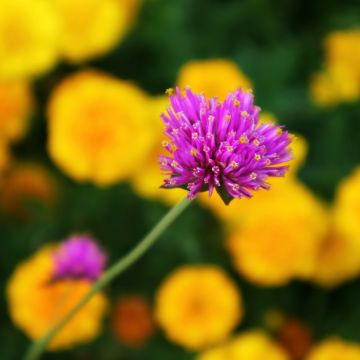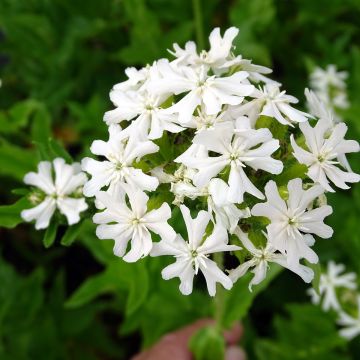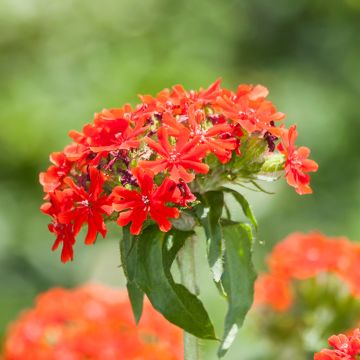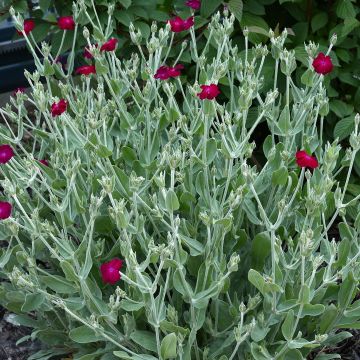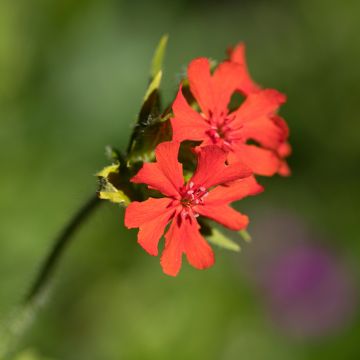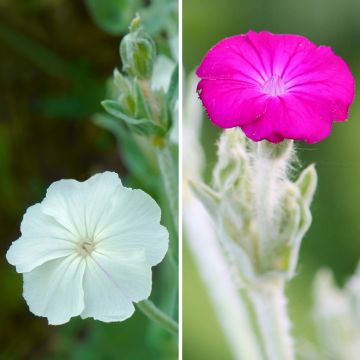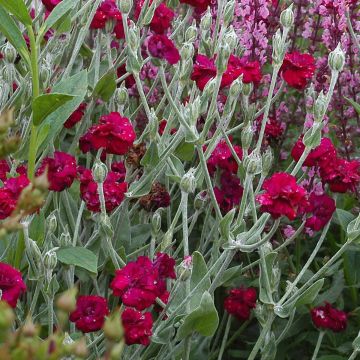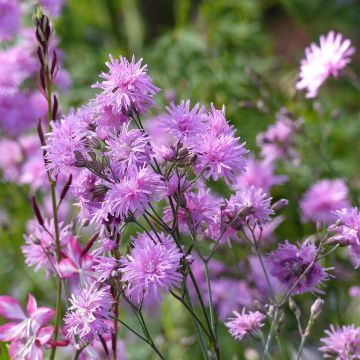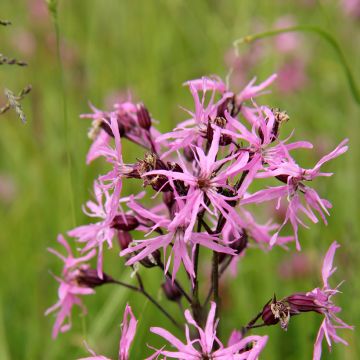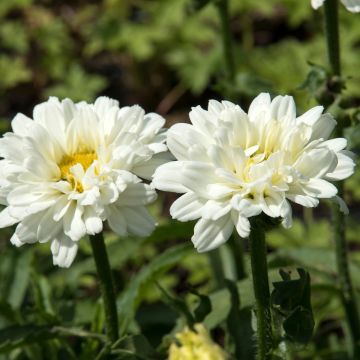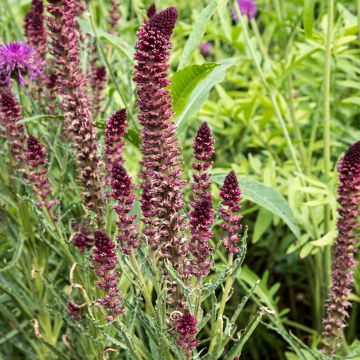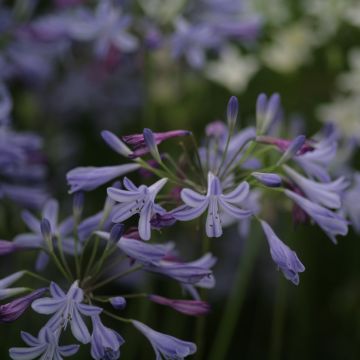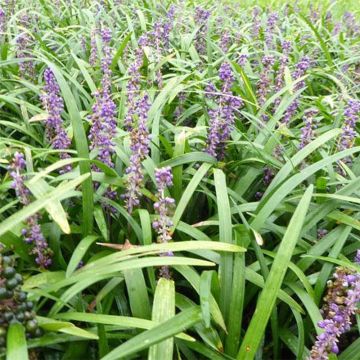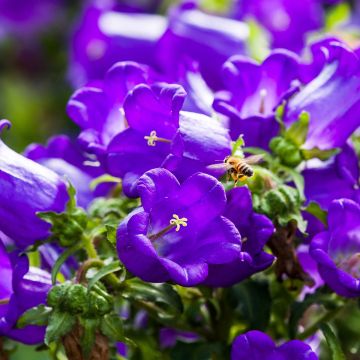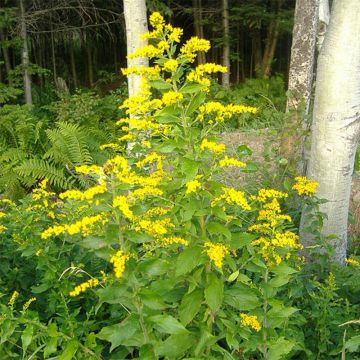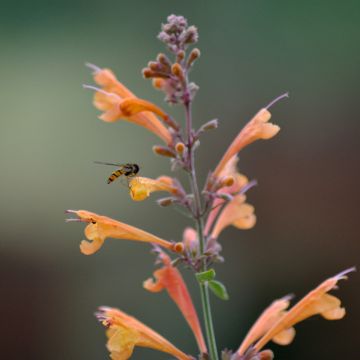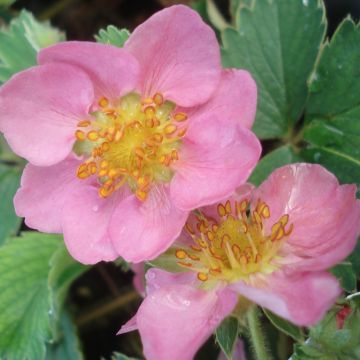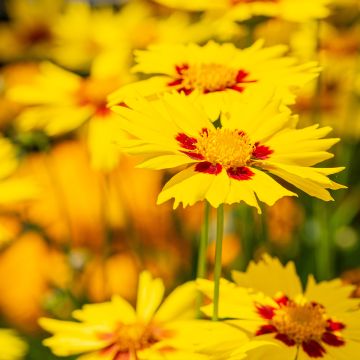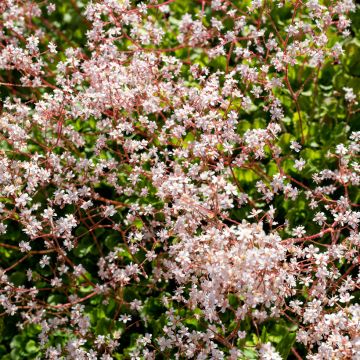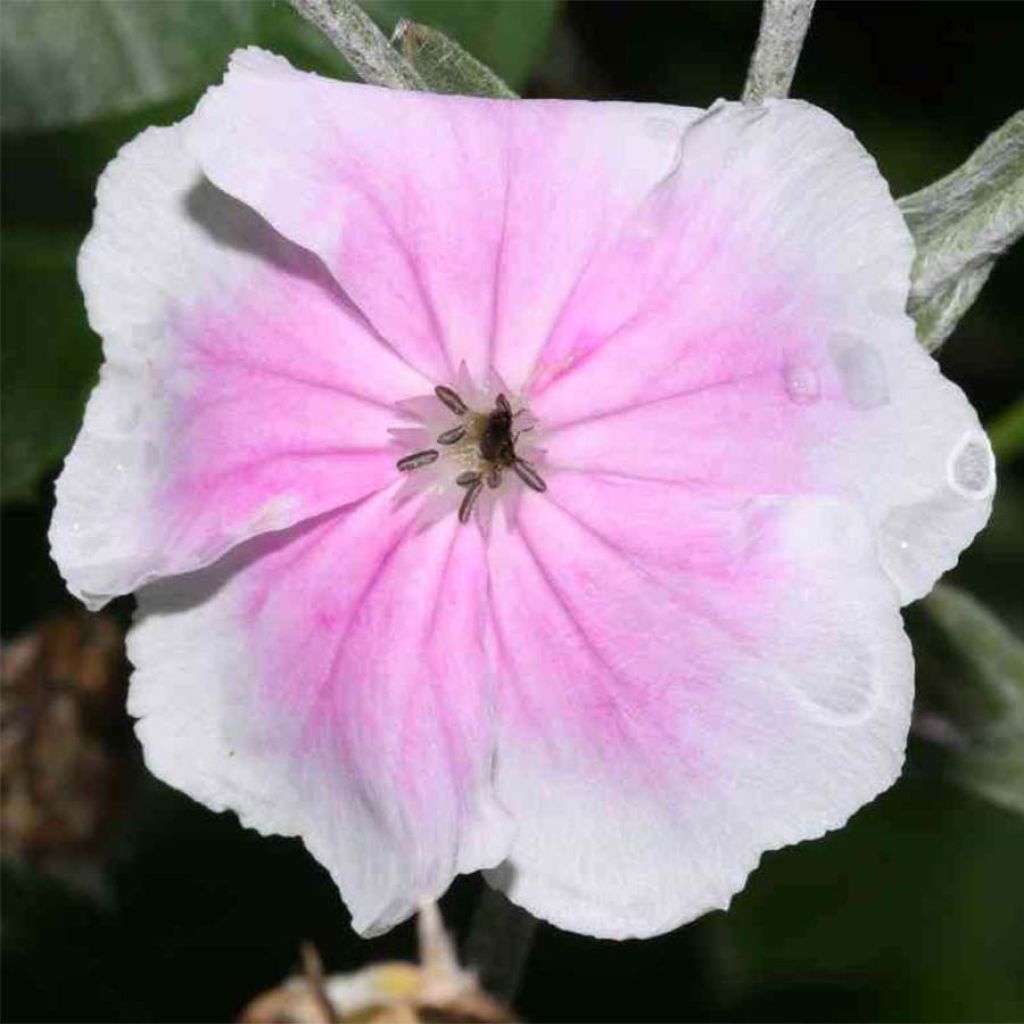

Lychnis coronaria Oculata
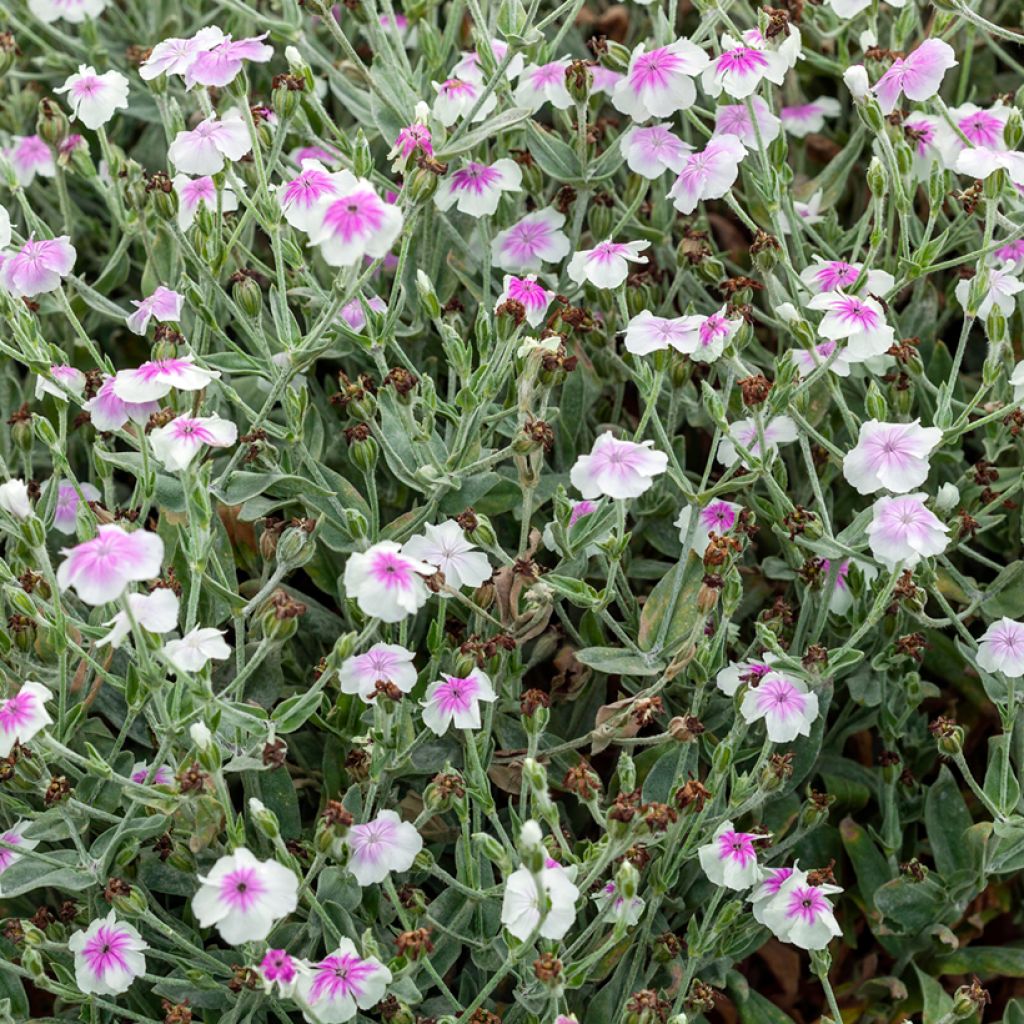

Lychnis coronaria Oculata
Lychnis coronaria Oculata
Lychnis coronaria Oculata
Rose Campion, Dusty Miller, Mullein-pink
Has not flowered
Mh, 26/11/2023
This item cannot be shipped to the selected country
Delivery charge from €5.90
More information
Schedule delivery date,
and select date in basket
This plant carries a 12 months recovery warranty
More information
We guarantee the quality of our plants for a full growing cycle, and will replace at our expense any plant that fails to recover under normal climatic and planting conditions.
From €5.90 for pickup delivery and €6.90 for home delivery
Express home delivery from €8.90.
Does this plant fit my garden?
Set up your Plantfit profile →
Description
The Lychnis coronaria Oculata, poetically named Angel's Blush, is a unique variety of garden catchfly, finally available in France. Its large angelic flowers display a stunning soft bicolour, with a pale pink to lilac centre fading to white on the petal edges. Its rosette foliage and long, ramified velvet grey stems are faithful to those of the species, remarkably graphic. This queen of herb gardens also has its place in a romantic and wild garden, planted in sunny, well-drained soil, even if it is poor and dry in summer. It will self-sow at will!
The Lychnis coronaria Oculata Angel's Blush is a horticultural variety derived from Lychnis coronaria, a plant native to southern Europe and western Asia. It is rather a biennial plant, quite faithful to sowing. It has been observed that the flowers of this 'Oculata' variety are maculated with a fairly variable pink tone depending on the climatic conditions. It is a tomentose-whitish plant, with a woody stump, forming rosettes at the base from which emerge stems rising to 40-80 cm (16-32in), robust, single or dichotomous-branched. Flowering takes place from June to September, in the form of quite large flower clusters for the species, 3.5 to 4 cm (1 to 2in) wide. They are round, open cups more or less flat and frilly, white with a pale to deep pink eye, with long peduncles. Its leaves are oval-oblong, silver-gray, semi-evergreen to evergreen in mild climates, and tomentose.
This Lychnis coronaria Oculata has its place in informal gardens as well as in romantic or more sophisticated flower beds. Plant it in small clusters in front of shrub borders or in groups, as a single plant can look a bit awkward. A very beautiful combination can be achieved with the wild form Lychnis coronaria and the white form 'Alba', the harmonious agreement between the pastel pink of its flowers, the extraordinarily vivid magenta red, the purity of the white flowers and the silvery velvet foliage of the three plants being perfect. The catchflies elegantly accompany old or English roses, buddleias, bright pink phlox paniculata, or in dry soil, Perovskia and aromatic plants such as Sage, thyme, lavender, and rosemary, which require the same growing conditions.
Report an error about the product description
Lychnis coronaria Oculata in pictures
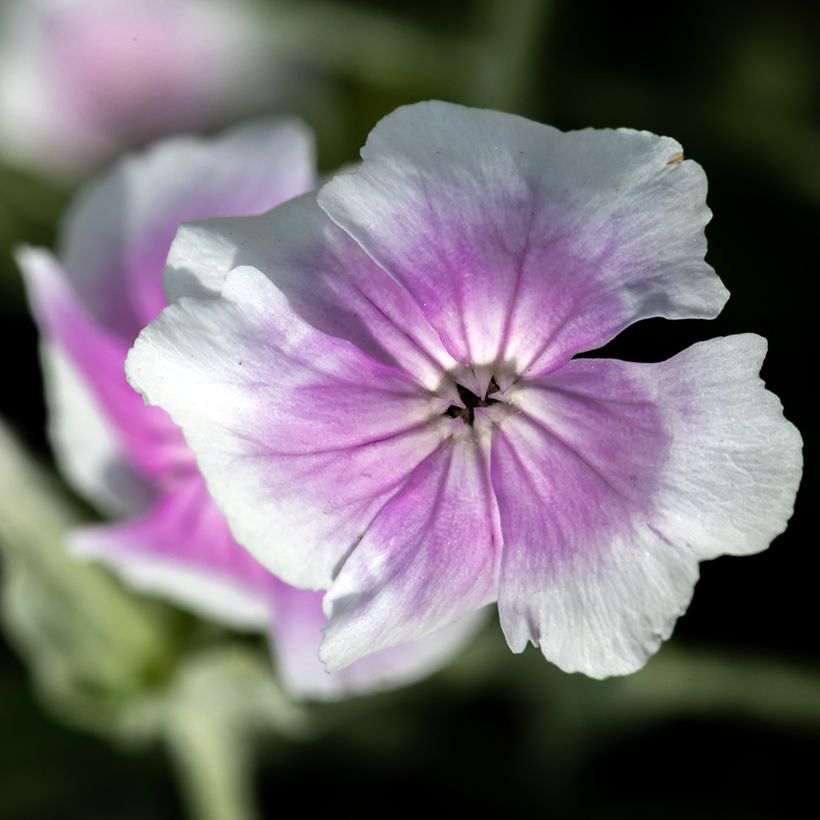

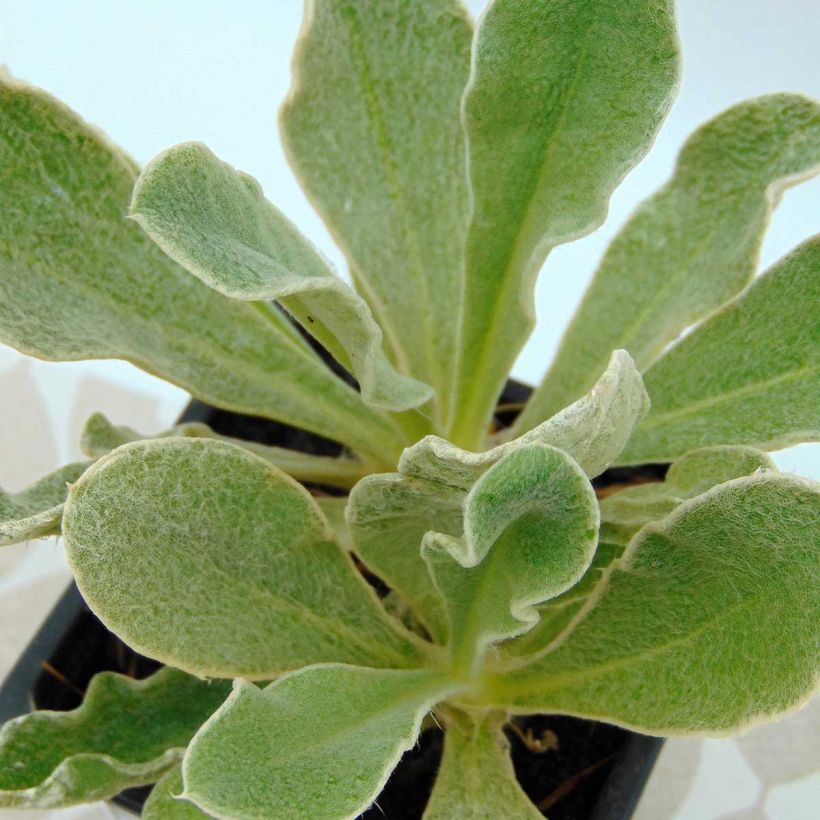



Flowering
Foliage
Plant habit
Botanical data
Lychnis
coronaria
Oculata
Caryophyllaceae
Rose Campion, Dusty Miller, Mullein-pink
Cultivar or hybrid
Other Lychnis
Planting and care
Hardy up to -15°C (5°F) (Zone 4 to 9), Lychnis coronaria 'Oculata' thrives in sunny or semi-shaded positions. This plant is naturally found in uncultivated and rocky areas. Plant it in a porous, dry to moist but well-drained, neutral to slightly alkaline soil, from February to April in the north and from September to November in more southern regions. In regions with harsh winters, it can be repotted in autumn to protect it from frost. This lychnis tolerates drought well, requires little care and watering. Prune it after flowering to remove dry parts, promote new growth and a second flowering. Note that seedlings may not necessarily produce plants that are identical to the parent plant in terms of flowering.
Planting period
Intended location
Care
-
, onOrder confirmed
Reply from on Promesse de fleurs
Summer flowering perennials
Haven't found what you were looking for?
Hardiness is the lowest winter temperature a plant can endure without suffering serious damage or even dying. However, hardiness is affected by location (a sheltered area, such as a patio), protection (winter cover) and soil type (hardiness is improved by well-drained soil).

Photo Sharing Terms & Conditions
In order to encourage gardeners to interact and share their experiences, Promesse de fleurs offers various media enabling content to be uploaded onto its Site - in particular via the ‘Photo sharing’ module.
The User agrees to refrain from:
- Posting any content that is illegal, prejudicial, insulting, racist, inciteful to hatred, revisionist, contrary to public decency, that infringes on privacy or on the privacy rights of third parties, in particular the publicity rights of persons and goods, intellectual property rights, or the right to privacy.
- Submitting content on behalf of a third party;
- Impersonate the identity of a third party and/or publish any personal information about a third party;
In general, the User undertakes to refrain from any unethical behaviour.
All Content (in particular text, comments, files, images, photos, videos, creative works, etc.), which may be subject to property or intellectual property rights, image or other private rights, shall remain the property of the User, subject to the limited rights granted by the terms of the licence granted by Promesse de fleurs as stated below. Users are at liberty to publish or not to publish such Content on the Site, notably via the ‘Photo Sharing’ facility, and accept that this Content shall be made public and freely accessible, notably on the Internet.
Users further acknowledge, undertake to have ,and guarantee that they hold all necessary rights and permissions to publish such material on the Site, in particular with regard to the legislation in force pertaining to any privacy, property, intellectual property, image, or contractual rights, or rights of any other nature. By publishing such Content on the Site, Users acknowledge accepting full liability as publishers of the Content within the meaning of the law, and grant Promesse de fleurs, free of charge, an inclusive, worldwide licence for the said Content for the entire duration of its publication, including all reproduction, representation, up/downloading, displaying, performing, transmission, and storage rights.
Users also grant permission for their name to be linked to the Content and accept that this link may not always be made available.
By engaging in posting material, Users consent to their Content becoming automatically accessible on the Internet, in particular on other sites and/or blogs and/or web pages of the Promesse de fleurs site, including in particular social pages and the Promesse de fleurs catalogue.
Users may secure the removal of entrusted content free of charge by issuing a simple request via our contact form.
The flowering period indicated on our website applies to countries and regions located in USDA zone 8 (France, the United Kingdom, Ireland, the Netherlands, etc.)
It will vary according to where you live:
- In zones 9 to 10 (Italy, Spain, Greece, etc.), flowering will occur about 2 to 4 weeks earlier.
- In zones 6 to 7 (Germany, Poland, Slovenia, and lower mountainous regions), flowering will be delayed by 2 to 3 weeks.
- In zone 5 (Central Europe, Scandinavia), blooming will be delayed by 3 to 5 weeks.
In temperate climates, pruning of spring-flowering shrubs (forsythia, spireas, etc.) should be done just after flowering.
Pruning of summer-flowering shrubs (Indian Lilac, Perovskia, etc.) can be done in winter or spring.
In cold regions as well as with frost-sensitive plants, avoid pruning too early when severe frosts may still occur.
The planting period indicated on our website applies to countries and regions located in USDA zone 8 (France, United Kingdom, Ireland, Netherlands).
It will vary according to where you live:
- In Mediterranean zones (Marseille, Madrid, Milan, etc.), autumn and winter are the best planting periods.
- In continental zones (Strasbourg, Munich, Vienna, etc.), delay planting by 2 to 3 weeks in spring and bring it forward by 2 to 4 weeks in autumn.
- In mountainous regions (the Alps, Pyrenees, Carpathians, etc.), it is best to plant in late spring (May-June) or late summer (August-September).
The harvesting period indicated on our website applies to countries and regions in USDA zone 8 (France, England, Ireland, the Netherlands).
In colder areas (Scandinavia, Poland, Austria...) fruit and vegetable harvests are likely to be delayed by 3-4 weeks.
In warmer areas (Italy, Spain, Greece, etc.), harvesting will probably take place earlier, depending on weather conditions.
The sowing periods indicated on our website apply to countries and regions within USDA Zone 8 (France, UK, Ireland, Netherlands).
In colder areas (Scandinavia, Poland, Austria...), delay any outdoor sowing by 3-4 weeks, or sow under glass.
In warmer climes (Italy, Spain, Greece, etc.), bring outdoor sowing forward by a few weeks.

































